Visit Rentovault to find adventure and photography
gear rentals from your neighbours.
Canon is one of the leading camera manufacturers in the world, offering a wide range of DSLR/Mirrorless cameras for both professional and amateur photographers. For beginners, one of the most important aspects to consider when choosing a Canon DSLR/Mirrorless camera is its lens mount system. The lens mount system determines which lenses are compatible with your camera, and it can greatly impact the quality and versatility of your photography.
DSLR
Canon DSLR cameras come with two main types of lens mounts: EF and EF-S. To fully understand the difference, it’s helpful to understand the difference between a full frame and a crop sensor camera.
Full-Frame vs. Crop-Sensor Cameras
When choosing a Canon DSLR camera, you will need to decide whether you want a full-frame or crop-sensor camera. Full-frame cameras have a larger sensor size than crop-sensor cameras, which means, among other things, that they can capture more details and provide better image quality in low light. They also have a wider field of view and a shallower depth of field, which makes them ideal for portrait, landscape, and architectural photography.
Crop-sensor cameras, on the other hand, are smaller and lighter than full-frame cameras, which makes them more portable and easier to carry around. They are also less expensive and can be a great option for amateur photographers who are just starting out.
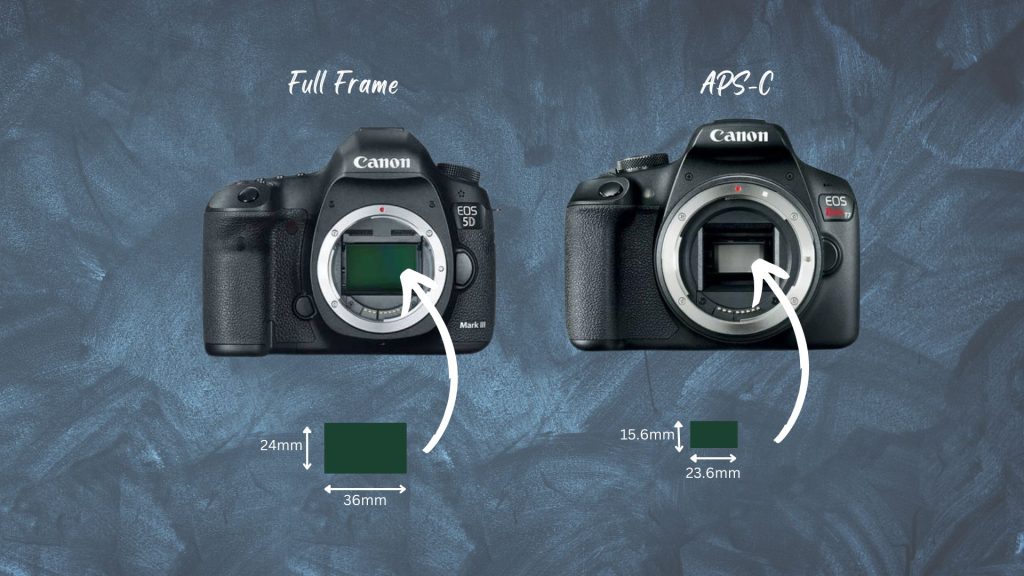
EF Lens Mount System:
The EF (Electro-Focus) lens mount system was introduced by Canon in 1987 and has since become the standard for Canon DSLR cameras. This lens mount is compatible with all Canon DSLR cameras, including full-frame and crop-sensor cameras. EF lenses are designed to cover the full-frame image sensor, which is equivalent in size to a 35mm film frame. This makes them ideal for professional photographers who require high-quality, wide-angle images.
EF lenses are available in a wide range of focal lengths and aperture settings, from ultra-wide-angle to super-telephoto. There are currently over 70 EF lenses available. They are also known for their fast and accurate autofocus, image stabilization, and superior optics, which can greatly enhance the sharpness, contrast, and color accuracy of your photographs.
The EF lenses and mount can be recognized by the presence of a red dot. As long as your camera body and your lens have a red dot, they are compatible.
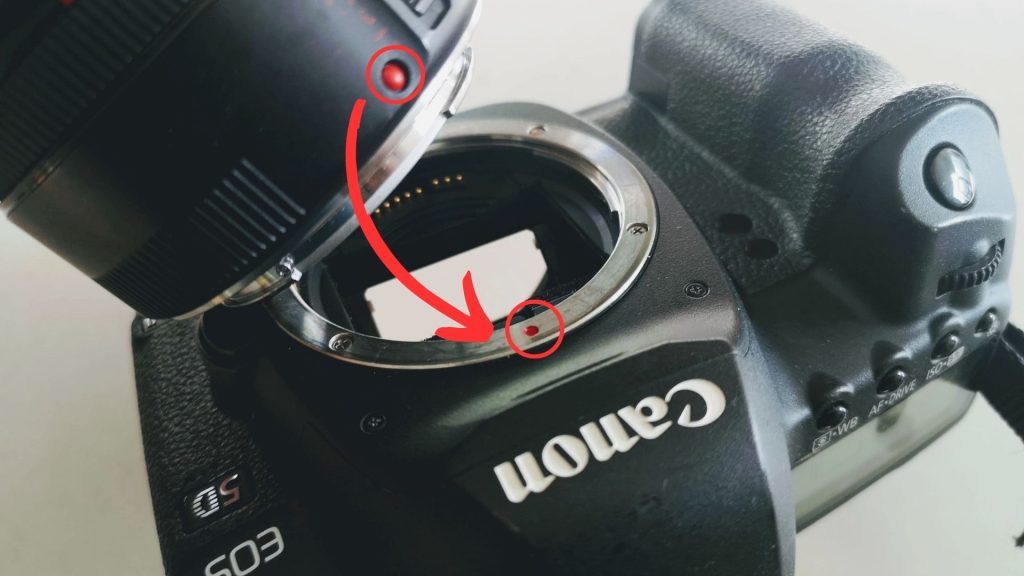
EF-S Lens Mount System
The EF-S (Short Back Focus) lens mount system was introduced by Canon in 2003 and is designed specifically for crop-sensor cameras. These cameras have a smaller image sensor than full-frame cameras, which means that the field of view is narrower and the angle of view is reduced.
One advantage of the EF-S mount is that it allows for more compact lenses to be designed for crop-sensor cameras but the drawback is that they work with the crop-sensor cameras only. EF-S lenses cannot be used with full-frame cameras, as they are designed to cover a smaller sensor size.
The EF-S lenses and mount can be recognized by the presence of a white square. The crop sensor camera will have both the white square and the red dot because they are compatible with both EF and EF-S lenses.

Mirrorless
Canon RF Mount:
The Canon RF mount was introduced in 2018 for use with Canon’s full-frame mirrorless cameras. They are the equivalent of EF lenses for the mirrorless counterparts. However, the RF mount has a larger mount diameter than the EF mount and a shorter flange focal distance of 20mm. Visually, the RF mount can be recognized by a red line on the camera and lens mounts.
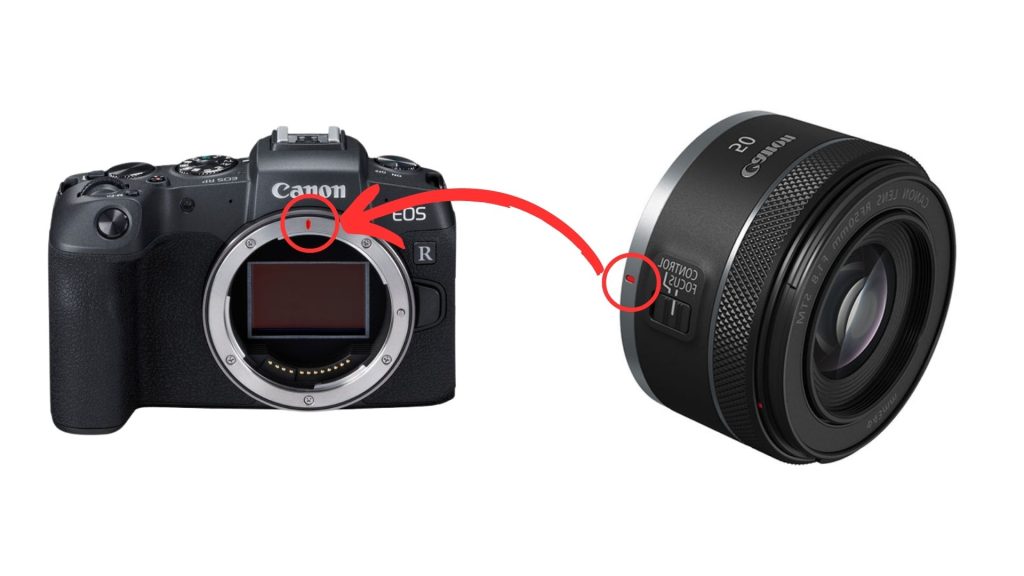
Canon EF-M Mount:
The Canon EF-M mount was introduced in 2012 for use with Canon’s crop-sensor mirrorless cameras. They are the equivalent of EF-S lenses for the mirrorless counterparts. However, the newer Canon mirrorless cameras are starting to use RF-S mounts and the future of these mounts is uncertain. The EF-M mounts are marked by a white circle.
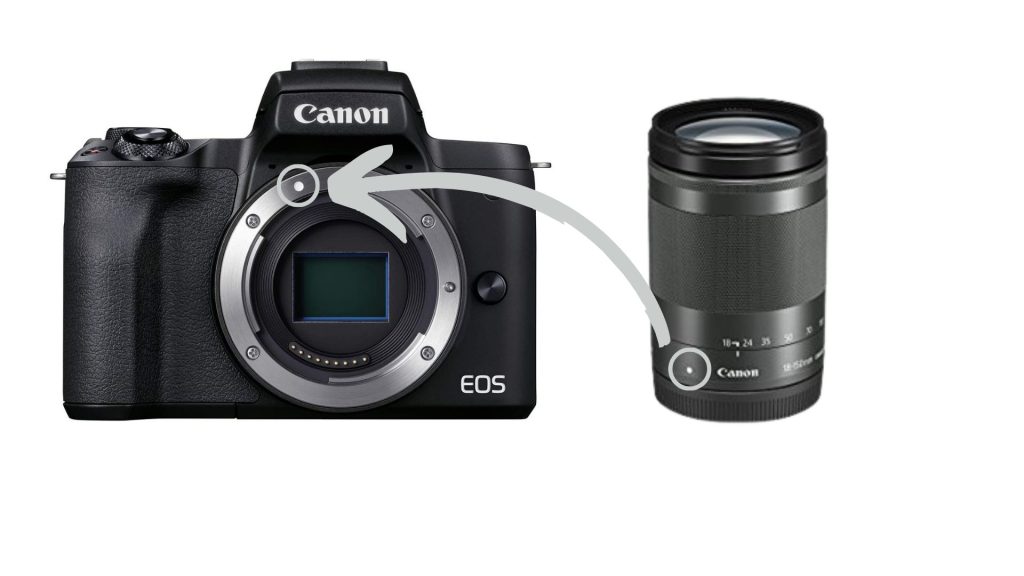
Canon RF-S Mount:
RF-S mount was introduced by Canon in 2020 for their mirrorless cameras with crop-sensors. It has a flange distance of 20mm and a mount diameter of 54mm, making it larger than the EF-M mount. RF-S lenses are designed to offer better image quality and performance than EF-M lenses due to their larger mount diameter, which allows for larger and more complex lens designs. The RF-S mounts are marked by a red line, just like the RF mounts. In fact, unlike the DSLR counterparts (EF and EF-S), the RF and RF-S mounts are interchangeable. This means if you have a Canon R-series camera, any RF lens will be compatible with it.
Here’s a mind-map to visualize all the mount types and their compatibility –
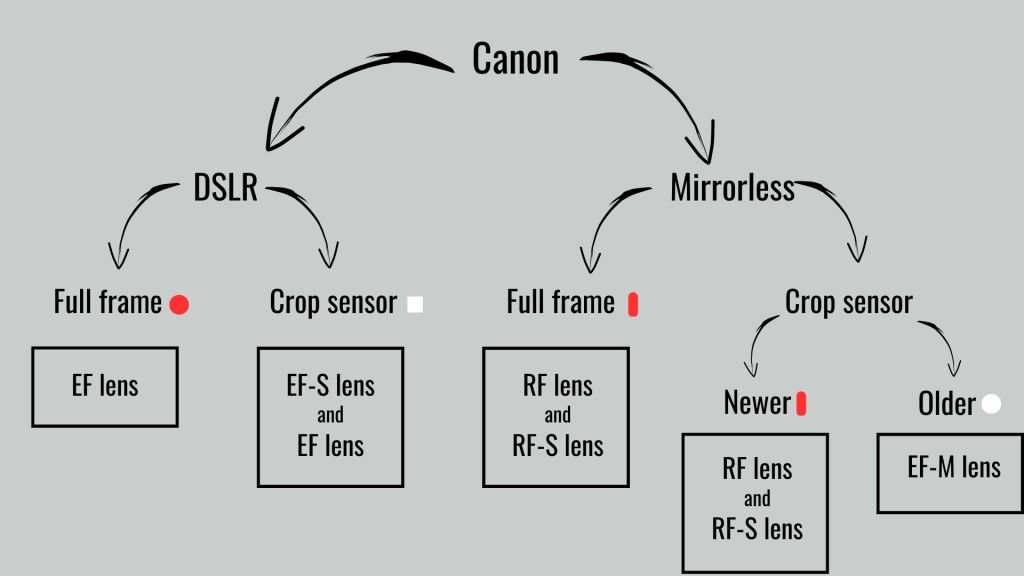
Converters
There are several different converters available to allow lenses to be used on otherwise incompatible mounting systems. Here’s what’s commonly available –
- EF to RF Mount Adapter: Canon has released several versions of this adapter, allowing EF and EF-S lenses to be used on RF mount cameras. The basic adapter provides simple lens compatibility, while other versions include features like a control ring or drop-in filter, adding more functionality to the adapted lenses.
- EF-M to EF/EF-S Adapter: This adapter allows EF and EF-S lenses to be used on EF-M mount cameras. It’s a great way to leverage a collection of EF or EF-S lenses on a smaller, mirrorless body.
- Speed Booster Adapters: Third-party manufacturers like Metabones offer Speed Booster adapters, which allow EF lenses to be used on EF-M bodies. These adapters have the added benefit of increasing the effective aperture of the lens and providing a wider field of view, mimicking a full-frame sensor’s performance.
Please note that while adapters and converters provide great flexibility, they may not support all lens functions, such as autofocus or image stabilization, depending on the specific lens and camera combination. Always check the compatibility and functionality of your lenses and adapters with your specific camera body.

